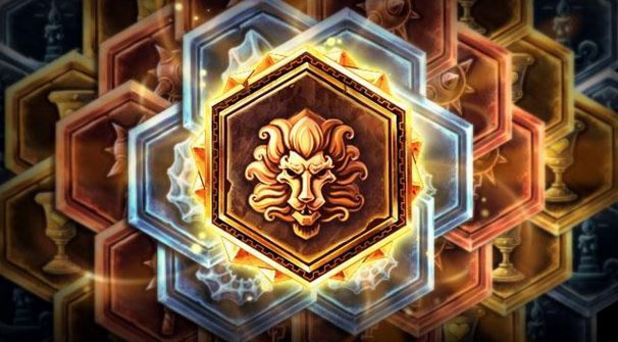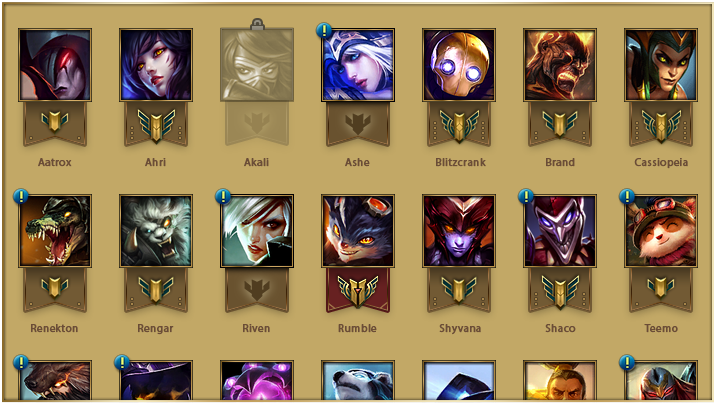Reworking rune customization in League of Legends

League of Legends is nominally a free to play game, but you wouldn't know it by how it's designed. This isn't a Penny Arcade-esque joke about its skins and cosmetics—that part of how it's structured is perfectly fine, and a laudable accomplishment on part of the company's artists and conceptualists that new champions and skins sell as well as they do.
But the runes, though. And rune pages. It's long past time that they were reworked from the ground up.
Currently, it costs 6300 IP to buy a new rune page, and roughly that to max out on one kind of rune. The same cost of a newly released champion, and equivalent to days of hard grinding. Though it is entirely possible to play with only the two default pages given freely to each account, that still tallies up to an exorbitant cost just to fill one page. Even if you're reusing certain runes between multiple pages, and the same two pages for literally every champion, the total time for a new player to fill both pages and a decent stable of champions is incredibly steep. A barrier to entry that affects not just newbies, but everybody who can't afford to dump whole hours into the game on a daily basis.
Using time invested as a content gate is perfectly alright in a progression-based game, especially single-player RPGs, but it hardly makes sense for a competitive lane-pusher. Inherently, it rewards repetition of play over skill—level one trades decided not by tactical feats of ingenuity, or even cunning customization choices, but whether or not a player can afford a beneficial rune loadout to complement the matchup.
There's also the issue where, as they are designed now, runes are almost pointless anyhow. The statistical and practical value of each optimized almost instantly, no matter how often they're updated, so that every role and every champion has a pro- and analyst-certified best kit. The point of customization is lost due to how the current system is designed, again making it so that it's more a matter of who's invested enough time to buy full power, rather than who's the better player.
That can't stand. The customization system for League of Legends is one of its more interesting facets, standing in contrast to other MOBAs. The adjustments and tweaks it offers a playstyle can turn losing lanes into winners, weak points into strengths, or at least get your mage closer to that all-important 40% cooldown reduction maximum. But it needs to change to make it work as intended, and I have a few ideas for that.
True Mastery

First thing is: make it easier to access. The new Champion Mastery system, currently just a cosmetic addition for hyperfocusing on specific champions, is ideal for these purposes. The only form of progression-style play that should be encouraged in a competitively driven game like League of Legends is progression in skill and familiarity—which is why I'm not making a big fuss about the time needed to reach account level 30, as it'd take that long to get over the burden-of-knowledge hump in the first place.
The biggest gaming news, reviews and hardware deals
Keep up to date with the most important stories and the best deals, as picked by the PC Gamer team.
But what then? An extra emote and a fancy banner or champion icon overlay is a fairly dismal award for the time invested. An extra rune page, though, would actually be commensurate with the effort invested—and would leave the newbie player enough IP to actually use the page by picking up a set of runes, armed with extensive champion practice to know what set to pick up in order to either complement their strengths or offset the weaknesses they've experienced.
Speaking of picking up rune sets: the current rune tiers are a joke. Tier 1 sets might be enough for low-level play, and cheap besides, but their usefulness quickly expires. And Tier 2s are at an awkward spot—too expensive for their value, and sitting at a level range where you want to be saving up for Tier 3s anyhow. The tiered "progression" is nonsense and wasteful, especially since they finally removed the Rune Combiner this season, after years of having it be a way for trolls and phishers to seriously mess up a hijacked account.
Better, I think, to have individual runes be more expensive, so long as they level as your account levels. Or, even better: a lot of veteran players have complained about the lack of an IP sink. Being able to upgrade old or rarely used rune sets from Tier 1 to Tier 3 via IP would be a good way to do just that.
Heck, in keeping with the cosmetics monetization theme, they can even bling them out with a dual RP/IP option. Gold, crystal or rainbowed rune sets—no statistical bonuses for "upgrading," but for the opportunity to show off a decked out page on-stream.
Actual Options
The second thing to do: make customization meaningful. And this bit is more challenging.
Part of the problem with cookie-cutter builds is sheer inevitability. When runes involve hard and static values, like flat Attack Damage or health points per level, they have a hard and static corresponding in-game value, measured by their equivalents in item-based bonuses. Contrast those values with the stats that are most relevant to the roles they play, and the actual range of viable options quickly narrows.
You can't really keep pro players and analysts from figuring out best-value sets, but you can make them more situational, so that the hard value calculations are set aside and it becomes a matter of tailoring to strategy instead. In continuing with the earlier article of applying lessons from other games to League, Splatoon's gear customizations include bonuses based on the phases of a match—early-game out-of-the-gate bonuses versus last-chance bonuses.
Applying that to AP or AD-per-level runes, where you gain comparatively more or less based on how close or far you are from level 18, helps augment based on overall team playstyle, and whether they want to play a patient or aggressive strategy. Threat detection too, basing stat bonuses on how many allies or enemies are close to you—or aren't. Conditional runes like that could tailor themselves towards poke or pick strategies, or further strengthen all-in brawling compositions that want full-fledged wars over Dragon and Baron.
Either way, decoupling champion modification from hard statistical value shouldn't be impossible—difficult to design, yes, and worth a very long test run before implementing publicly. But when the whole point of customization is to make the champion play to personal stylistic preferences, it's a design space worth developing.

